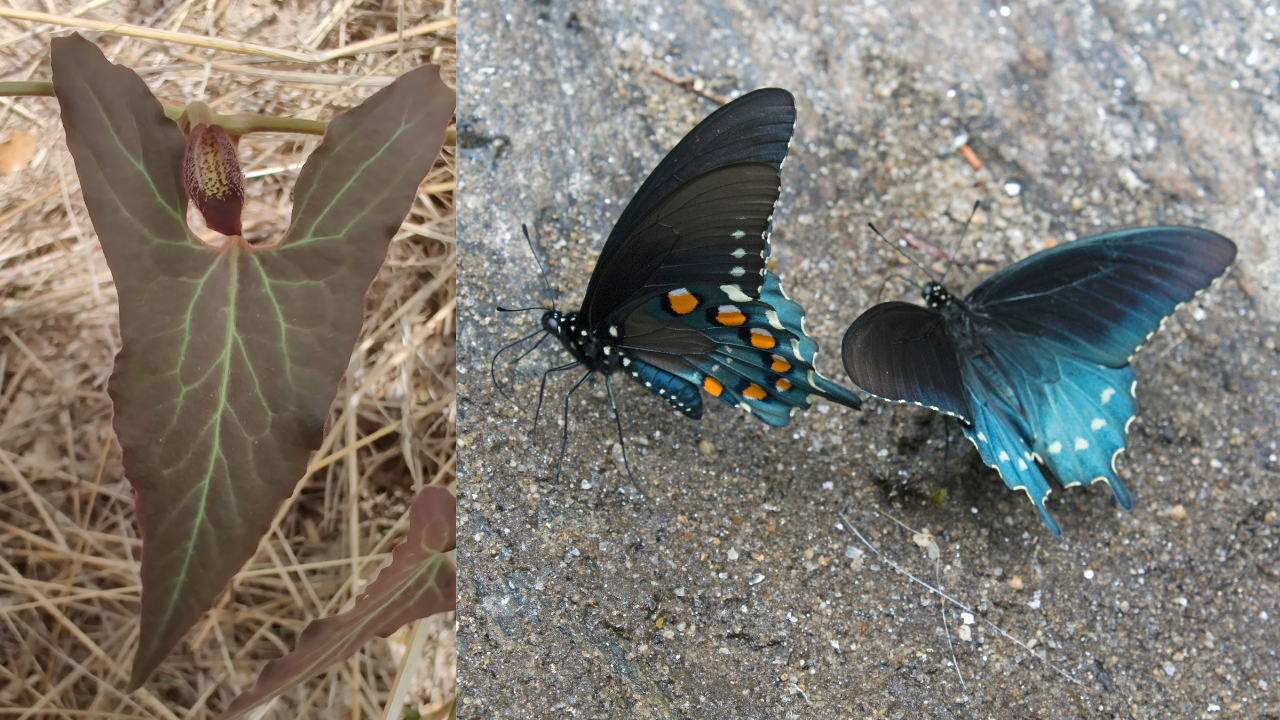
Snake Bites and Butterflies- The Story of an Extraordinary Desert Vine
Jan 05, 2022Introduction
The Watson’s dutchman’s pipe, also called desert pipevine, is a unique desert vine with some very interesting features… Not only has this little vine been historically used as a snakebite remedy, it also has a fascinating life story...
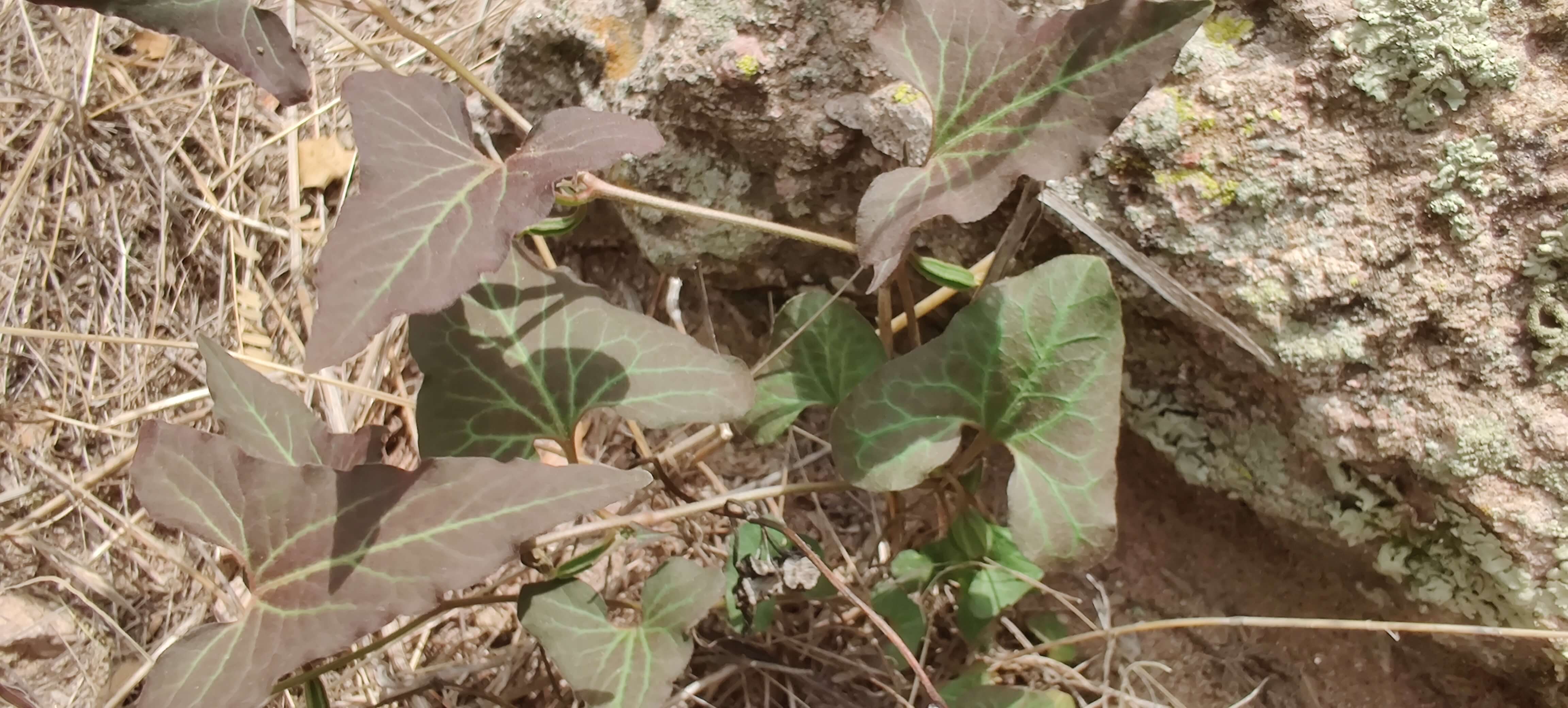
Our story of desert pipevine starts in the only place it grows- the desert. Although there are about 8 species of pipevine(Aristolochia spp.) in the United States, A. watsonii is the only one that grows in Arizona. Its range stretches from the Sonoran Desert in southern Arizona, east into southwestern New Mexico, and south into Mexico.
Desert pipevine is easy to overlook, but once you finally find it, you’ll start seeing it everywhere. It’s found next to springs, in mesquite “bosques”(forests), and in large desert washes, associated especially with mesquite, but also with palo verde and catclaw acacia. It likes lower, wet areas, but every time I find it there are saguaro cactus in sight, peering down from the hills above.
So far I’ve found desert dutchman’s pipe in the Superstition Mountains, and in mesquite stands lining the Gila River(where it still flows, that is). It’s quite common once you get an eye for it.
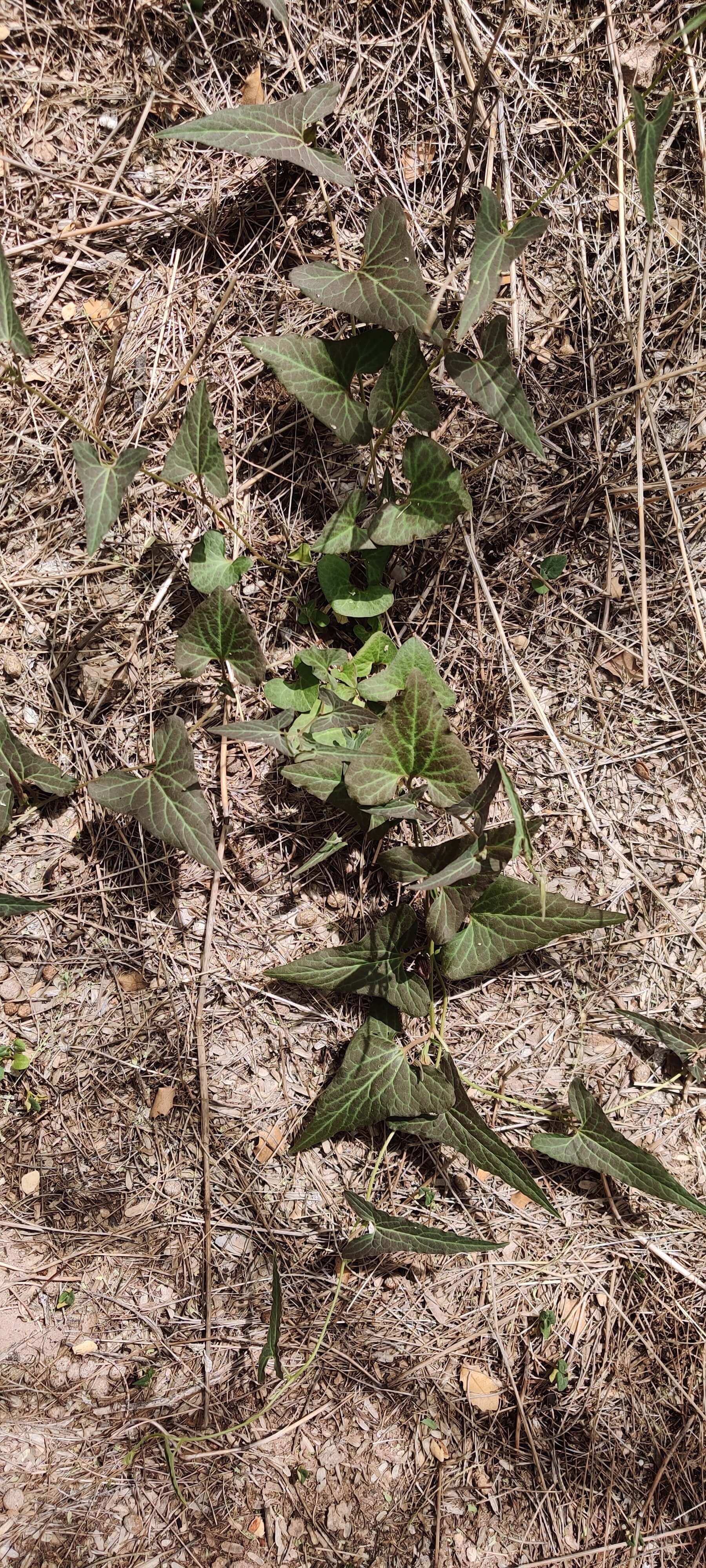
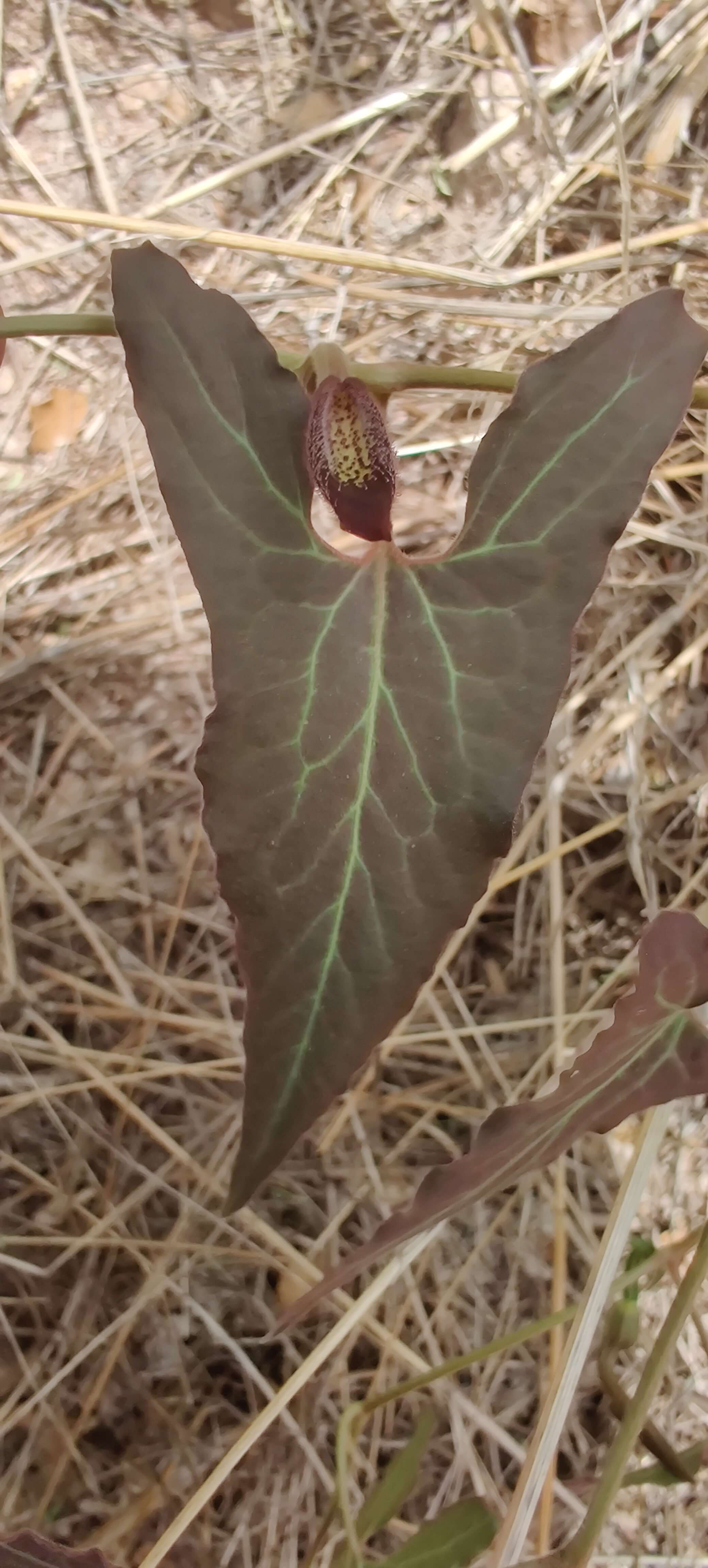
Watson's dutchman's pipe (Aristolochia watsonii)
Description
Watson’s dutchman’s pipe is a perennial vine, which means it comes back every year from a persistent taproot. It usually grows more horizontally than vertically, sprawling along the shaded ground underneath trees.
The leaves are what we call hastate, which means “spear shaped”. They are narrowly triangular with two deep lobes at the base. They range in size depending on growing conditions. In direct sun they can be much smaller, but they grow larger in the shade. As shown in the pictures, the leaves can be green or a dark, reddish purple.
The flowers of desert dutchman’s pipe are stunning. God made them with the most interesting design. They are made to perfectly resemble a mouse’s ear. The shape of the flower, the hairs, the speckled pattern that resembles veins- and this flower is even said to give off a musty odor! One of the reasons for this is to attract their pollinators: biting flies.
These little flies, often known as no-see-ums or sand flies, fly into the flower expecting to get a meal of mouse blood, and instead get stuck in the flower's tube overnight. When they are released, they fly to another flower and pollination occurs! Isn’t that amazing!?
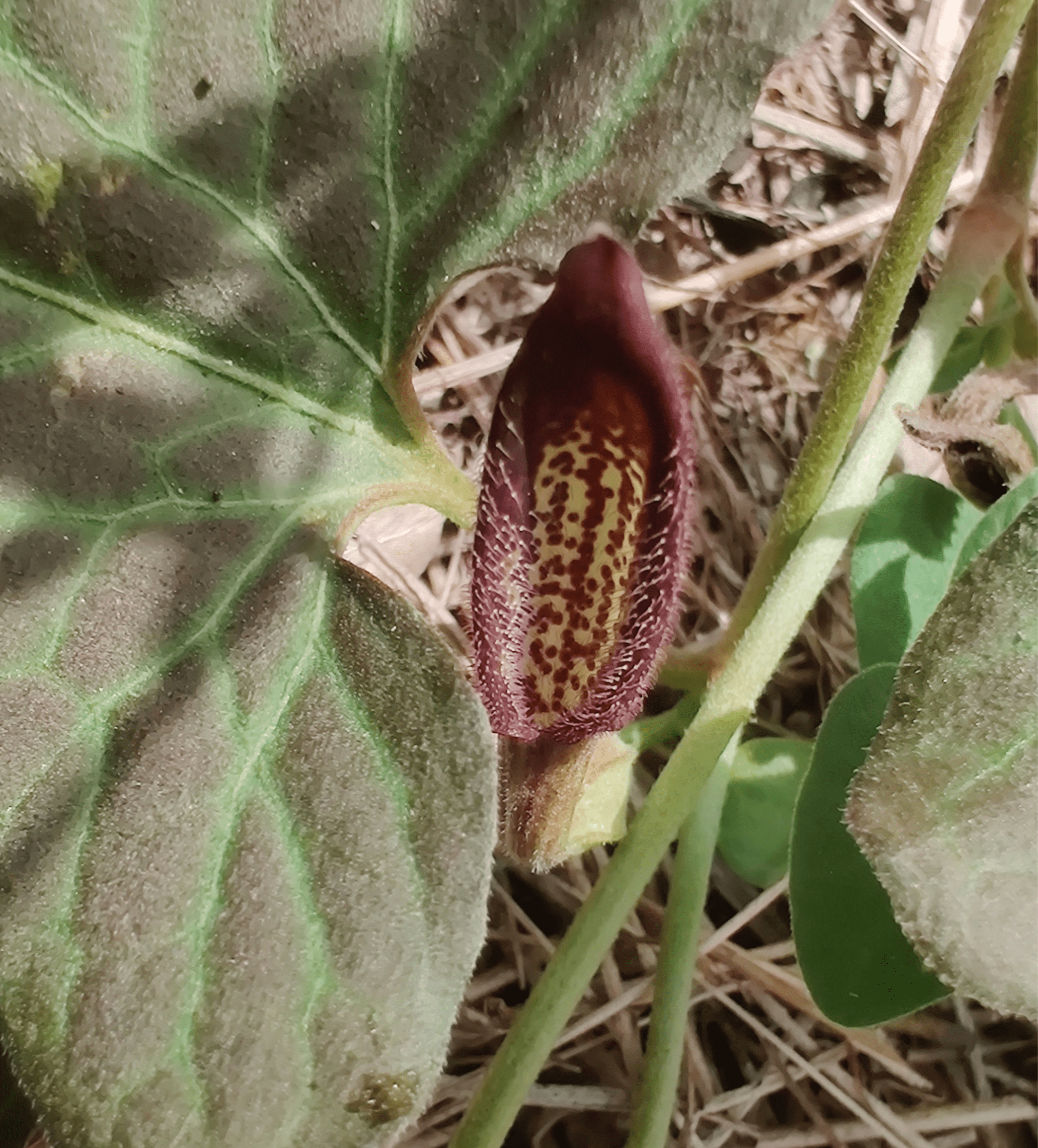
Watson's dutchman's pipe flower
Ecology
There’s another insect besides sand flies that interact with this plant, a beautiful butterfly called the Pipevine Swallowtail(Battus philenor).
Pipevine Swallowtails are a large, iridescent, black and blue butterfly that lays their eggs ONLY on species of dutchman’s pipe(Aristolochia spp.). And because Watson’s dutchman’s pipe is the only species of Aristolochia in Arizona, that means that the only reason this butterfly is able to live in Arizona is because of this single plant! Without it, this butterfly wouldn’t be able to live here!
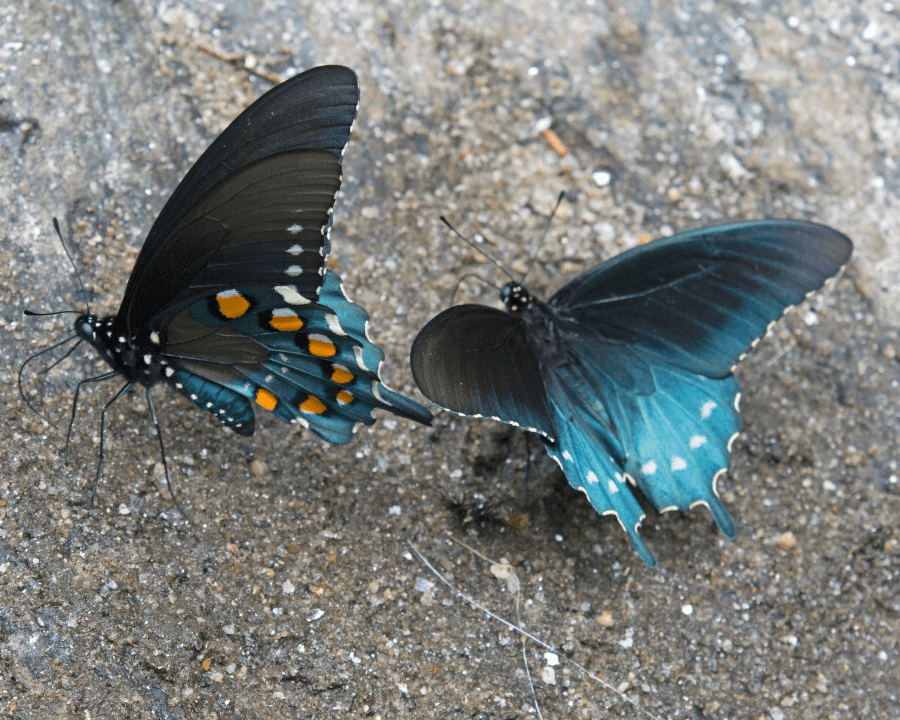
Pipevine Swallowtail (Battus philenor)
While the butterfly itself feeds on the nectar of many flowers, the caterpillars only eat desert pipevine, and they are a bizarre sight to see! They can be pure red, or black with red “tubercles”, as shown in the two pictures below. They store up toxins from the plants that make them poisonous to potential predators.
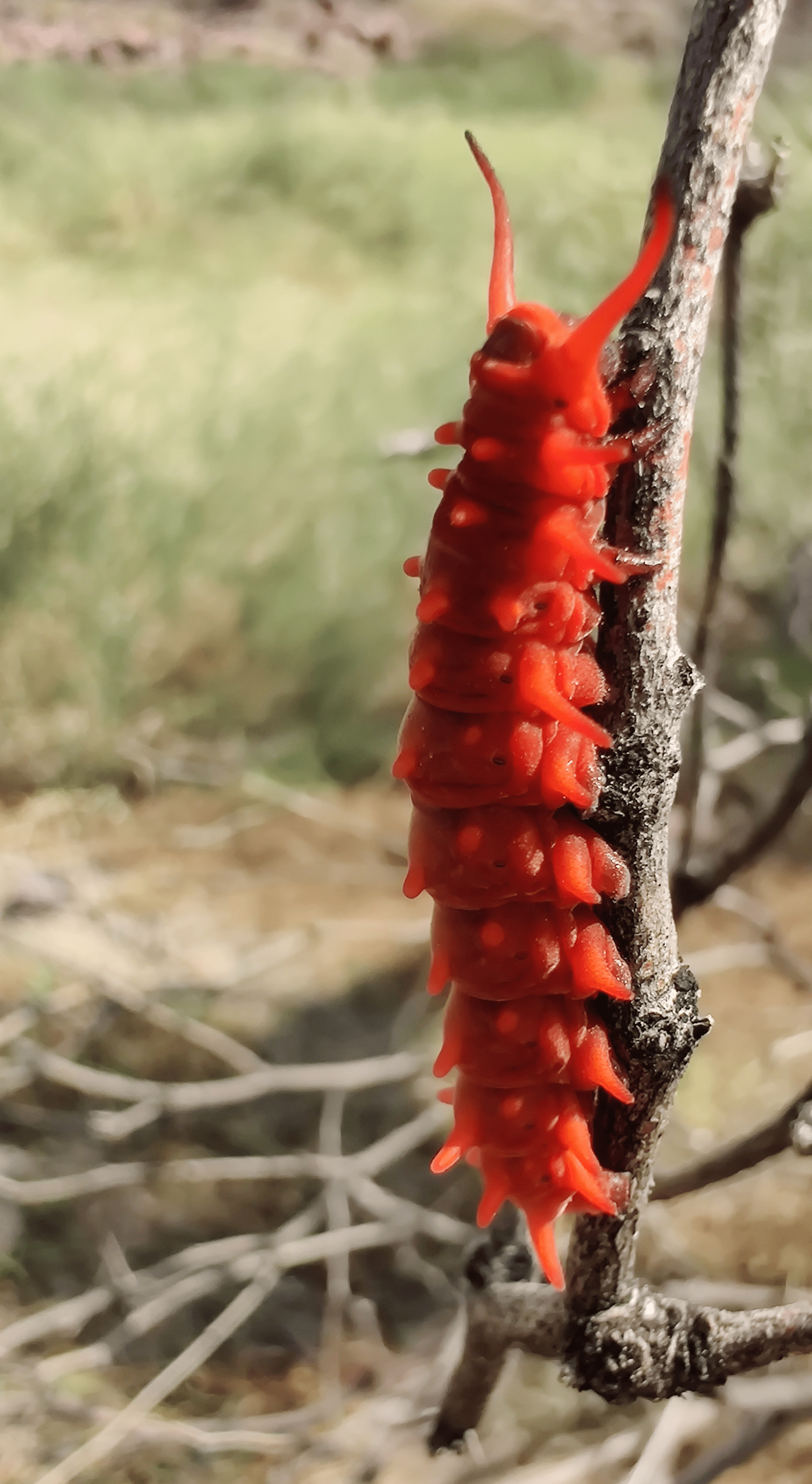
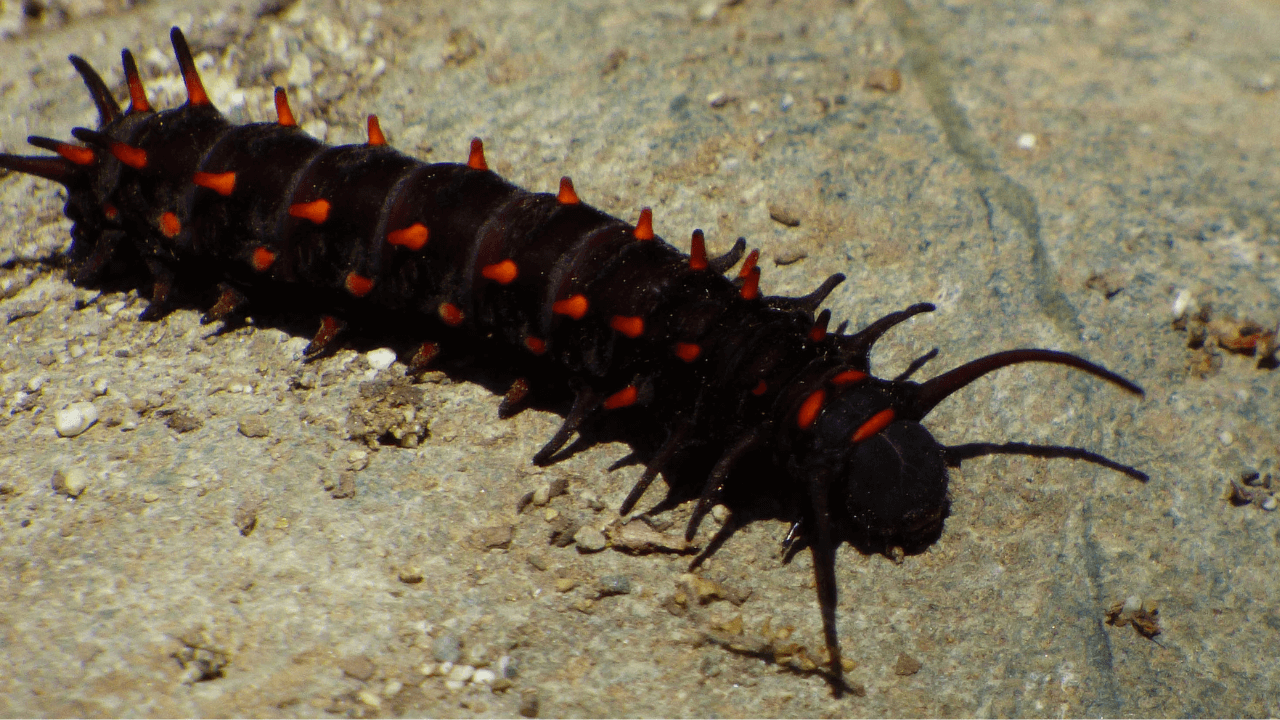
Two different Pipevine Swallowtail caterpillars showing the different color variations.
Medicinal Uses
The most remarkable quality of Watson’s dutchman’s pipe is its potential as an emergency snakebite remedy. According to Charles Kane, author of Medicinal Plants of the American Southwest,
“Most Aristolochia’s are known as topical snakebite medicines- our species is no different. Aristolochic acids have powerful neutralizing effects on venoms of most poisonous snakes. If springtime rattlesnake encounters are common, keep the salve or ointment made with 1-part Pipevine root and 1-part Echinacea handy. In conjunction with standard anti-venom therapies (and internal Echinacea), keep the bite covered with this mixture. Other venomous bites and stings (scorpion, cone-nose insects, brown recluse, and black widow) will also respond well to this combination.”
As you can see, the use of dutchman’s pipe as an emergency snake bite remedy is not only historically verified, but scientifically verified. Various species are used depending on the region of the world. There are numerous records of different Native American tribes using the plants. For snakebites, it was usually chewed up or ground(probably fresh) and applied directly to the wound.
The idea is not necessarily that the juice will seep into the small puncture holes left by the fangs, but that it will absorb through the skin into the surrounding tissue and help neutralize the venom before it has a chance to damage tissues and spread through the bloodstream.
As a final note, although there are numerous historical records of this plant being used internally, Kane notes that recent research has found that chemicals in some Aristolochia species are potentially toxic, namely aristolochic acids, and until more research is done for our local species, A. watsonii, it should be considered an external medicine only.
Conclusion
The Sonoran Desert is a land of beauty and wonder. Just imagine what other secrets are hidden here, if only we take the time to look! Desert pipevine is a great option for a desert landscape. Consider planting it to bring in those swallowtails! Thank you for taking the time to read along and share the experience!
Want our FREE ebook on Sonoran Desert foraging? Check out this link to download it today: https://www.legacywildernessacademy.com/sonoran-desert-ebook


